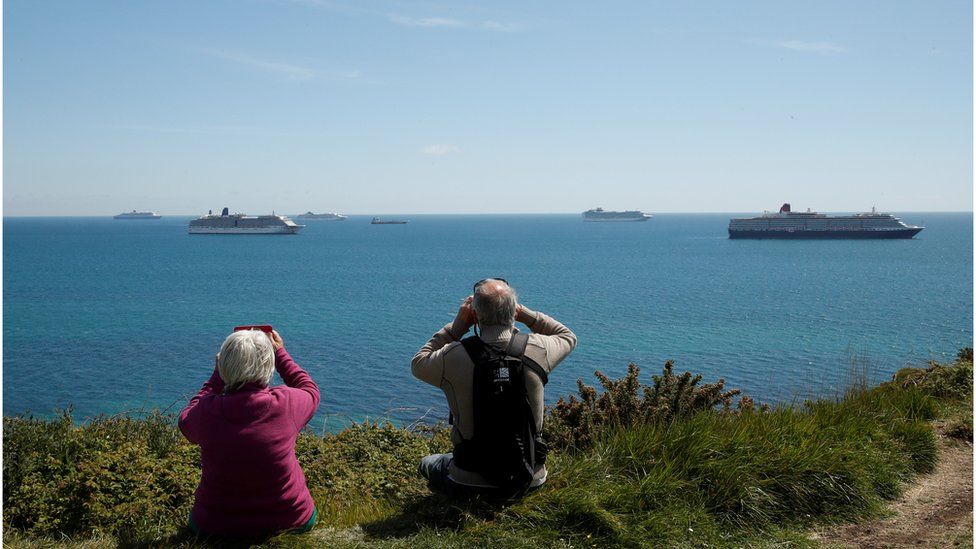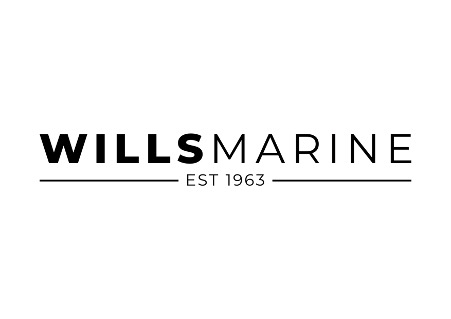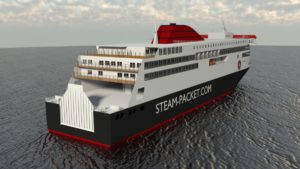Ghost cruise ships became a summer tourist attraction

One of the more unusual sights of the coronavirus pandemic has been that of cruise ships drifting around in the English Channel, apparently abandoned at sea. But why are they there? And how did they become a holiday attraction?
According to BBC News, it’s business as usual for Paul Derham and his latest venture on his small passenger ferry in Dorset: sightseeing tours of cruise ships anchored off England’s south coast.
“It’s a two-and-a-half-hour trip,” he says. “We have a really good trip out of it, actually.”
During the coronavirus pandemic, ships that usually spend the summer cruising the Mediterranean and Caribbean islands have instead found themselves lingering, near empty, in the Channel.
They have been anchoring off the coast from Portsmouth to Plymouth, and at night they illuminate the horizon.
The arrival of the UK’s “ghost ships”, as one Twitter user called them, has transformed the view from the coast, and fascinated locals and tourists alike. They have now become a tourist attraction in their own right, with people paying to see them up close, according to BBC News.
“I knew people would be impressed,” Derham says of his mini-cruises. The 62-year-old spent around three decades sailing cruise ships around the world before he bought the Mudeford Ferry, near Christchurch. He was even deputy captain on one of the ships he now takes his customers to see.
“We whacked it on Facebook one day,” he says of the idea. “We advertised two trips and we filled up within two hours.”
The cruise industry was hit early in the pandemic, when the virus first swept the Diamond Princess in Japan and then the Grand Princess in the US. Passengers were quarantined at sea after hundreds contracted the virus onboard.
Holidays were cancelled and empty boats had to go somewhere. So why have so many ended up in the Channel?
Ships have to pay fees to berth, meaning an already crippled industry would be losing even more money if they docked in ports.
The Port of Southampton – a departure port for many UK cruises – declined to say how much it charges, citing “commercial sensitivities”, but said it has “remained open” during the pandemic. “Ultimately, whether cruise ships anchor off the coast or alongside in the port, it is their choice,” a spokeswoman said.
But space could also be an issue. Southampton has four cruise ship terminals and can take up to six in exceptional circumstances.
P&O said its ships remain at sea because Southampton, which is also its home port, does not have room for all of them.
The ships do need to dock every so often to refuel and stock up on supplies for the reduced crew on board. The Cruise Lines International Association said how often they refuel depends on the ship and the type of fuel used. While they are designed to be able to run for two weeks, they “can last much longer”.
There are about 100 crew currently on each of the P&O vessels off the south coast, the company said. That is likely to include crew in the engine rooms, as well as cleaners, electricians, chefs and medics. To put that number into context, P&O’s largest liner, Britannia, has capacity for around 5,000 guests and crew.
Professor Richard Bucknall, director of research at University College London’s department of mechanical engineering, says it “isn’t possible to have any ship at anchor without a crew on board”.
He said that is because of dangers of “anchor drag”, or ships drifting at sea, due to severe weather.
Read the full article online.











